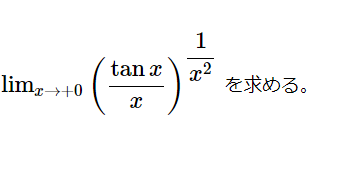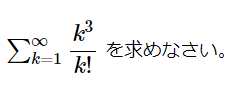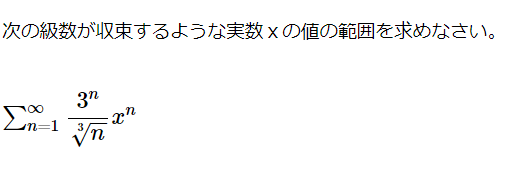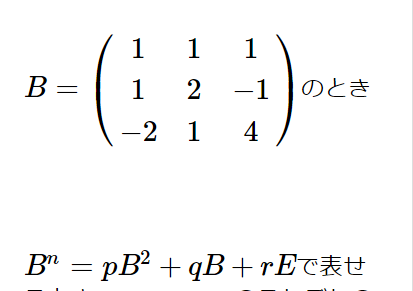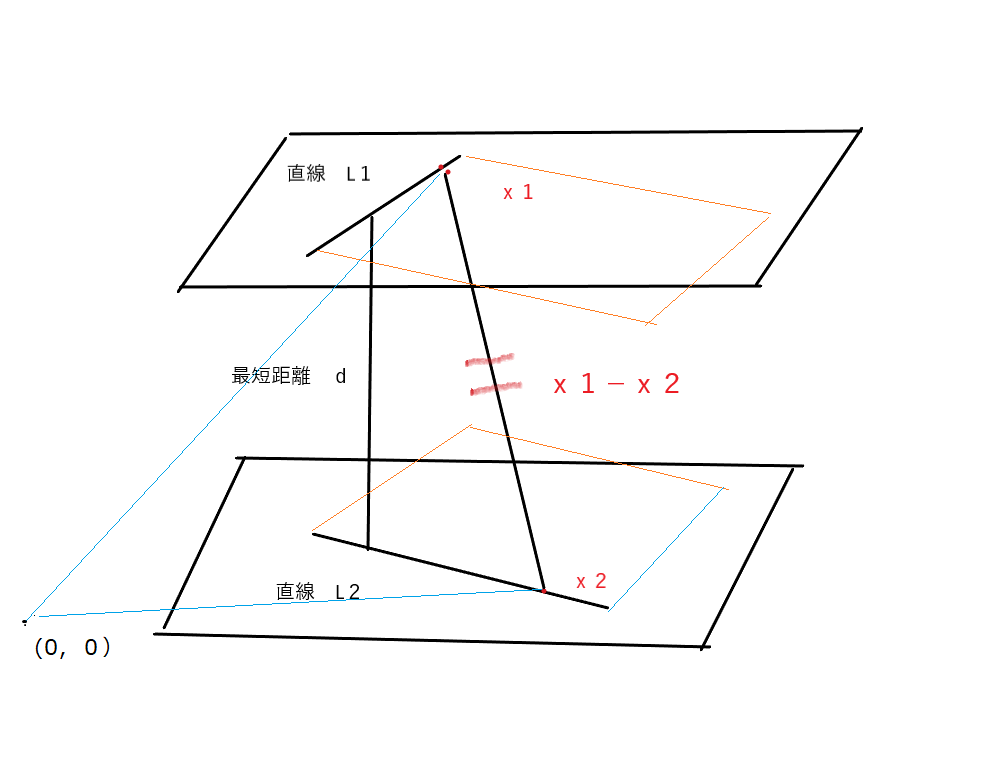
ここで勉強すれば数学検定1級の壁は超えられるか。
分母の有理化だけで求める(極限4)

[math]\lim _{x\rightarrow 3}\dfrac {6-x^{2}+x\sqrt {x^{2}-8}}{9-x^{2}}[/math]
[math]=\lim _{x\rightarrow 3}\left( 1+\dfrac {x\sqrt {x^{2}-8}-3}{9-x^{2}}\right)[/math]
[math]=\lim _{x\rightarrow 3}\left( 1+\dfrac {x\sqrt {x^{2}-8}-3}{9-x^{2}}\cdot \dfrac {x\sqrt {x^{2}-8}+3}{x\sqrt {x^{2}-8}+3}\right)[/math]
[math]=1+\lim _{x\rightarrow 3}\dfrac {x^{2}\left( x^{2}-8\right) -9}{\left( 9-x^{2}\right) \left( x\sqrt {x^{2}-8}+3\right) }[/math]
[math]=1+\lim _{x\rightarrow 3}\dfrac {\left( x^{2}-9\right) \left( x^{2}+1\right) }{\left( 9-x^{2}\right) \left( x\sqrt {x^{2}-8}+3\right) }[/math]
したがって
[math]=1+\dfrac {-\left( 3^{2}+1\right) }{3+3}=1-\dfrac {10}{6}=-\dfrac {2}{3}[/math]・・・答え
ロピタルの定理でも同様にできる。
同じカテゴリー「数検1級の極限」の一覧
Tanを含む式の極限値(極限15)
[math]\lim _{x\rightarrow +0}\left( \dfrac {\tan x}{x}\right) ^{\dfrac {1}{x^{2}}}[/ma […]
部分分解してから極限値(極限13)
①では、[math]\dfrac {1}{n^{2}\left( n+1\right) ^{2}}[/math] を部分分解する。 ②では[ma […]
3乗根を含んだ無限級数(極限12)
次の級数が収束するような実数xの値の範囲を求める。 [math]\sum ^{\infty }_{n=1}\dfrac {3^{n}}{\sqrt [3] {n}}x^{n […]
はさみこみで極限値を求める(極限11)
[math][/math]を初項117、公差ー6の等差数列の初項から第n項までの和とします。このとき、次の極限値を求める。 [math]\lim _{x\r […]
